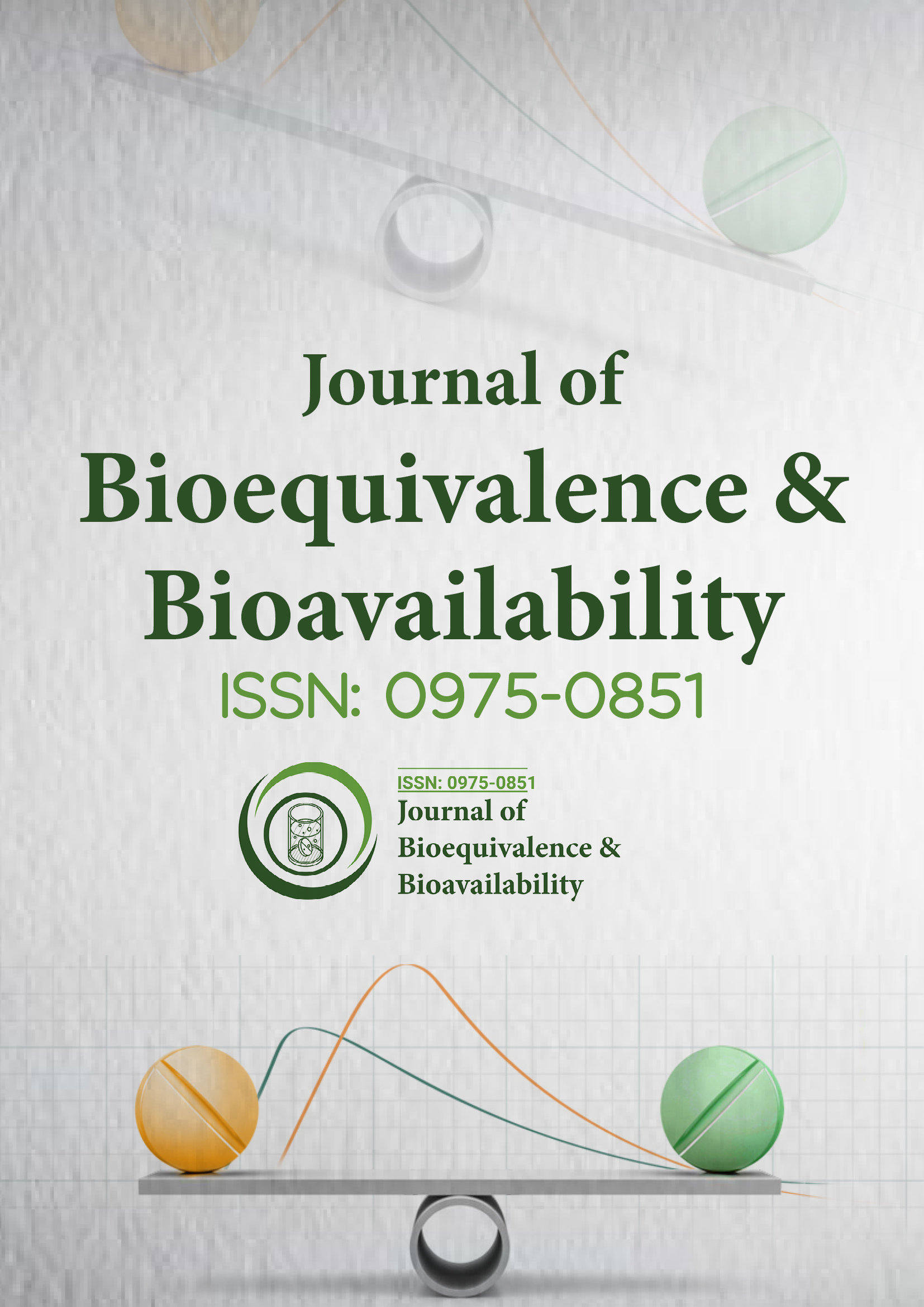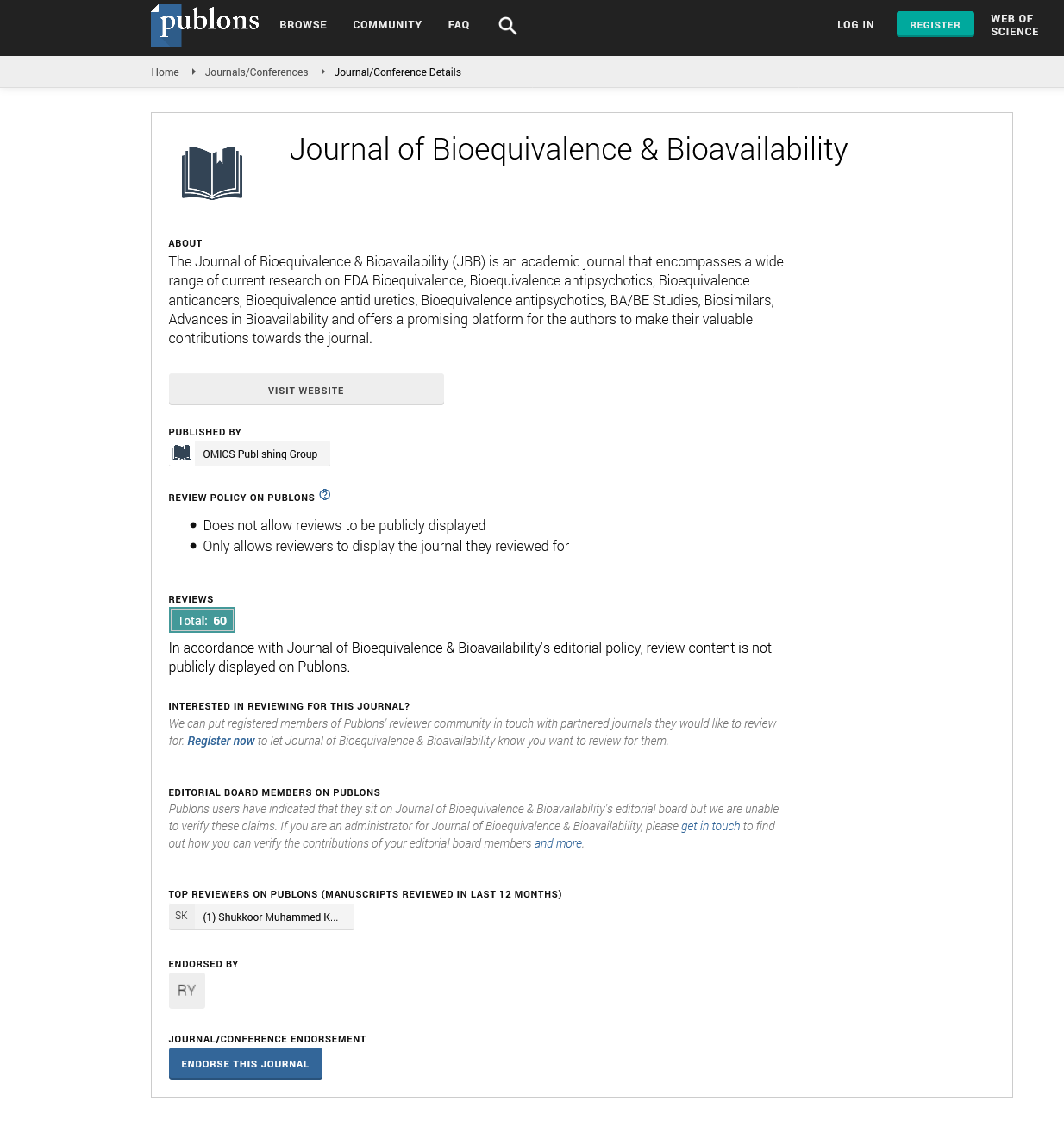Indexed In
- Academic Journals Database
- Open J Gate
- Genamics JournalSeek
- Academic Keys
- JournalTOCs
- China National Knowledge Infrastructure (CNKI)
- CiteFactor
- Scimago
- Ulrich's Periodicals Directory
- Electronic Journals Library
- RefSeek
- Hamdard University
- EBSCO A-Z
- OCLC- WorldCat
- SWB online catalog
- Virtual Library of Biology (vifabio)
- Publons
- MIAR
- University Grants Commission
- Geneva Foundation for Medical Education and Research
- Euro Pub
- Google Scholar
Useful Links
Share This Page
Journal Flyer

Open Access Journals
- Agri and Aquaculture
- Biochemistry
- Bioinformatics & Systems Biology
- Business & Management
- Chemistry
- Clinical Sciences
- Engineering
- Food & Nutrition
- General Science
- Genetics & Molecular Biology
- Immunology & Microbiology
- Medical Sciences
- Neuroscience & Psychology
- Nursing & Health Care
- Pharmaceutical Sciences
Opinion - (2025) Volume 17, Issue 2
Physiologically Based Pharmacokinetic Modeling in Support of Experimental Bioequivalence Trials
Emma Daniel*Received: 03-Apr-2025, Manuscript No. JBB-24- 28988; Editor assigned: 07-Apr-2025, Pre QC No. JBB-24- 28988 (PQ); Reviewed: 21-Apr-2025, QC No. JBB-24- 28988; Revised: 28-Apr-2025, Manuscript No. JBB-24- 28988 (R); Published: 05-May-2025, DOI: 10.35248/0975-0851.25.17.635
Description
Bioequivalence, by definition, implies that two pharmaceutical products—usually a generic and its brand-name counterpart—are comparable in terms of their rate and extent of absorption into systemic circulation. This ensures that the therapeutic effects, as well as the safety profiles of the two drugs, are indistinguishable within acceptable limits. Experimental drug trials play a pivotal role in substantiating this equivalence, particularly when in vitro assessments and conventional pharmacokinetic modeling fall short of capturing the nuanced behavior of a drug in the human body. These trials, often involving human subjects under carefully controlled conditions, offer real-world insights into how bioequivalent products perform across various pharmacological and physiological parameters.
Experimental drug trials in bioequivalence are also critical in addressing the gaps left by traditional studies. Typically, bioequivalence is established through single-dose, crossover studies conducted in healthy volunteers under fasting conditions. While this model offers consistency and ease of comparison, it fails to reflect real-world usage scenarios where patients take medications chronically, often in the presence of food or alongside other medications. Moreover, disease states such as diabetes, renal impairment, or gastrointestinal disorders can significantly alter drug pharmacokinetics, potentially compromising the relevance of fasted-state bioequivalence results. Experimental trials conducted in patient populations, or under fed conditions, help bridge this gap by providing data that more accurately reflect actual therapeutic use.
Another compelling reason for conducting experimental drug trials in the realm of bioequivalence is the increasing focus on biosimilars. Unlike small-molecule generics, biologics are large, complex molecules produced through living systems. Their inherent variability and sensitivity to manufacturing conditions pose formidable challenges to achieving true bioequivalence. Regulatory bodies such as the FDA and EMA now require a stepwise approach to biosimilar approval, beginning with analytical comparability, followed by nonclinical and clinical studies, including experimental trials that assess pharmacokinetics, pharmacodynamics, and immunogenicity. These clinical investigations are crucial in determining whether a biosimilar can replicate the reference product’s therapeutic efficacy and safety without necessitating full-scale efficacy trials.
Despite the scientific importance of experimental trials in bioequivalence, they are not without controversy. One of the most debated issues is the ethical dimension of subjecting healthy individuals or patients to experimental interventions that may not provide direct therapeutic benefits. Even though the drugs under investigation are generally considered safe and effective, the burden of risk remains. Informed consent, rigorous monitoring, and adherence to ethical guidelines are imperative to ensure that participant welfare is never compromised. Moreover, transparency in trial design, reporting, and conflict-of-interest disclosures is essential to uphold public trust in the outcomes of these studies.
Furthermore, the economic implications of conducting experimental bioequivalence trials cannot be ignored. Compared to conventional pharmacokinetic assessments, these trials are significantly more resource-intensive, requiring specialized infrastructure, skilled personnel, and extended timelines. For generic manufacturers operating under tight budgetary constraints, the cost of conducting such trials can be prohibitive, potentially deterring the development of certain generics despite their high clinical need. This financial barrier may limit the availability of affordable treatment options, especially in low and middle-income countries where healthcare budgets are already stretched thin. Policymakers and regulators must therefore explore mechanisms such as public-private partnerships, fee waivers, or international harmonization to reduce the economic burden associated with experimental trials.
Innovative tools such as Physiologically Based Pharmacokinetic (PBPK) modeling, artificial intelligence, and real-world evidence are increasingly being integrated into trial methodologies to improve accuracy and efficiency. These approaches allow researchers to simulate various dosing scenarios, predict drug behavior in specific patient populations, and identify potential risks before initiating human trials. Such innovations not only enhance the scientific validity of experimental trials but also pave the way for more personalized and adaptive bioequivalence assessments.
Citation: Daniel E (2025). Physiologically Based Pharmacokinetic Modeling in Support of Experimental Bioequivalence Trials. J Bioequiv Availab. 17:635.
Copyright: © 2025 Daniel E. This is an open-access article distributed under the terms of the Creative Commons Attribution License, which permits unrestricted use, distribution, and reproduction in any medium, provided the original author and source are credited.

